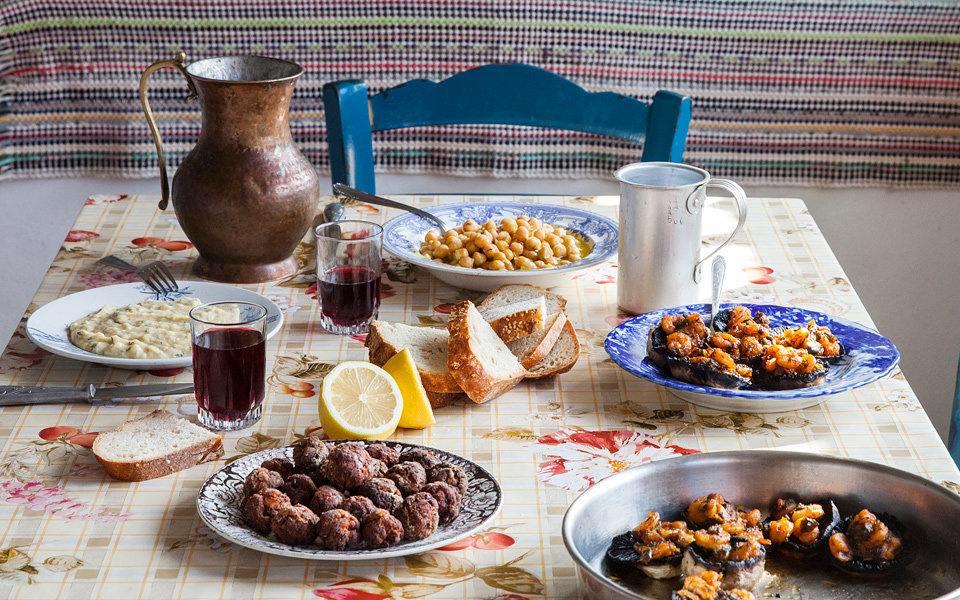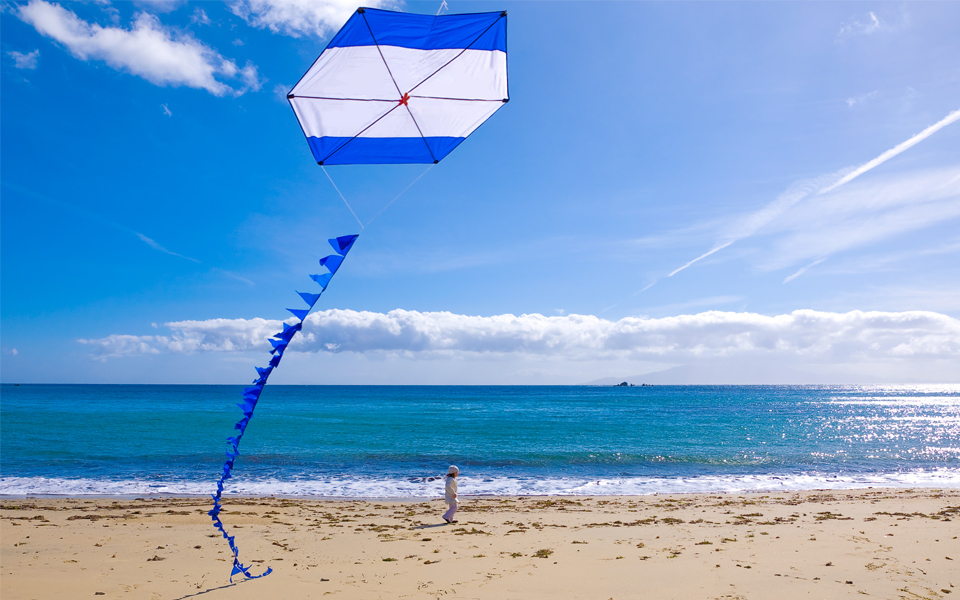Nobody is quite sure where the kite-flying tradition came from. Some say that the ancient Greek mathematician Archytas of Tarentum designed and flew the first kite to test aerodynamics, while others believe it started when people would write wishes on the kites and fly them as high as possible for the gods to answer. Either way, on Clean Monday, a national holiday that marks the beginning of the 40-day fasting period leading up to Easter, Greeks young and old head outside to any nearby open space, to make their colorful kites dance in the air. In the old days, the kites were carefully crafted on wooden frames with paper stretched across. Today, you can easily buy a traditional or a plastic version in order to join the fun; you’ll find them for sale in toy stores, at supermarkets, and at stalls by the side of the road.
If you are blessed with fine weather on Clean Monday, it’s usually one of the best days of spring. After several weeks of partying and the barbecue-fest of Tsiknopempti, this day for many symbolizes a period of healthy habits, self-care, and purity. Although, besides the kite-flying, even this day is celebrated with a great feast – we are Greeks, after all. While rooted in orthodox Christian beliefs, the customs of Clean Monday have come to enjoy a more cultural, rather than religious, significance, and serve as another way to enjoy good food with loved ones while preserving traditions and customs of days gone by.

© George Drakopoulos

© Dimitris Tosidis/INTIME NEWS
What does it mean?
The name for the day in Greek, Kathara Deftera, literally translates to Clean Monday. The following nistia (fasting period) is meant to cleanse the body and soul, as well as purify the mind through religious contemplation, hence the use of the word “clean.” For 40 days, those who adhere to the rules of the fasting period will stick to a diet which is sometimes described as vegan, since no meat, dairy or eggs are consumed throughout the period. At the supermarket during this time, you’ll see nistisimo (i.e. “suitable for fasting”) labels attached to products that meet these criteria, while more vegan dishes also appear on restaurant menus.

© Dimitris Vlaikos
What’s for lunch?
Clean Monday comes with its own set of cuisine and dietary traditions. Meat and fish are forbidden, but shellfish, squid, and octopus are allowed. Families normally gather for a large Clean Monday lunch featuring a table laden with various types of meze. The stars of the table are the lagana (a long, sesame-covered flat bread), taramosalata (fish roe dip) and halva.

© Shutterstock

© Shutterstock

© Shutterstock
Lagana
Made by bakeries across Greece only on the day of Clean Monday, the flat lagana bread is traditionally made with unleavened dough, although nowadays yeast is used in small quantities. The resulting loaf is quite flat compared to the usual Greek bread loaf, dimpled and heavily sprinkled with sesame seeds. It’s thought that the bread symbolizes the help that God gave the Israelites during the Exodus, when bread from heaven was rained down on them. The name of the bread comes from the ancient Greco-Roman word for pastry dough which is also the word that lasagna originates from.
Taramosalata
A typical Greek meal to mark any family gathering or feast will feature a number of different dips and spreads, all perfect for being slathered over chunks of flat lagana bread. On Clean Monday, the king of all these spreads is taramosalata, a spread made with fish roe. This can either be creamy white or pink in appearance, depending on the roe you use to make it: white or red. White roe is considered to be of superior quality while the red kind is a relative newcomer, first appearing in the 1950s. Each camp has an avid following. To make traditional taramosalata, the roe is pounded in a pestle and mortar with boiled potatoes or bread (the old-school method is to use almonds) and olive oil, though food processors take much of the hard work out of it these days. The dip is then served with olive oil drizzled over it, and often a black olive which dots the middle of the plate.
Halva
The final staple of the Clean Monday table is halva, either plain vanilla or streaked through with cocoa. Most popular on this day is the style of halva made with tahini as opposed to semolina, referred to as Macedonian halva. This dense, nutty halva starts out as a thick sugar syrup, to which room-temperature tahini is added. The mixture is then kneaded by hand in large copper bowls until it starts to firm up. Just before it becomes fully firm, flavorings and nuts are added and the mix is pressed into a mould, to be cut up and served later. It’s a must-have, and the market stalls in downtown Athens selling handmade halva chopped off large blocks, become almost inaccessibly crowded on the weekend prior to Clean Monday.












